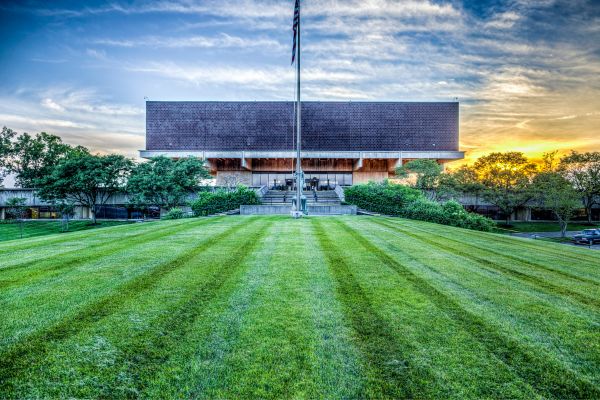
- Details
- By Jenna Kunze
The law, included in the state budget bill and pending approval of the Ohio senate, would authorize The Ohio History Connection to use six acres of its existing land in an undisclosed location to put to rest the 7,167 Native ancestors it holds in its collection. A portion of those ancestors were unearthed by professional archaeologists— including staff from the Ohio History Connection— beginning in the late 1800s. Others were excavated and later donated to the museum by amateur archaeologists and state residents who came across human remains while developing the property as recently as last year, according to the museum’s director.
If approved, the legislation would be the answer that dozens of tribal nations with historic ties to the area have been seeking for years: how to rebury an ancestor as close as possible to where they were unearthed, despite their tribe’s removal from the area.
“What we’ve heard consistently from our tribal consultations is that: their ancestors in our care lived their whole lives here,” said Alex Wesaw, the director of the Ohio HistoryConnection’s American Indian Relations Division and a citizen of the Pokagon Band of Potawatomi. “The common custom is for people to be buried, most often, close to where they lived their lives.”
Ohio History Connection staff has been consulting with the roughly 60 affected tribes with historic ties to Ohio since 2016. The tribes were forced to relocate out of the state beginning in 1795—to what is now Indiana, Kansas, Michigan, Minnesota, Missouri, Montana, New York, Oklahoma, Texas, and Wisconsin— with the Treaty of Greenville that ended the Northwest Indian War and removed tribes from most of Ohio.
“[The ancestors] would have never lived where the tribes are today,” Wesaw said. “So they have been asking for a place to be able to lay them to rest here in Ohio.”
Although the History Connection could have established a cemetery under state law, the process would have required them to re-register with the state every year.
Instead, Ohio lawmakers helped push for a solution “with minimal red tape” that provides an option—but not a mandate—for affected tribal nations to rebury their ancestors in Ohio, Warsaw said. In April, Representatives Jessica Miranda (D-Forest Park) and Bill Seitz (R-Cincinnati) introduced a bipartisan budget bill that legally allows the museum to use its land “for the purpose of repatriation of American Indian human remains.”
Although federal law passed by Congress 32 years ago — the Native American Graves Protection and Repatriation Act (NAGPRA) — mandates institutions to catalog and return the Native American human remains in their collections to present-day tribes, repatriation has been especially slow-moving in Ohio. Since NAGPRA’s passage, the Ohio History Connection has completed only 17 repatriations, returning less than one percent of its total holdings, according to federal records.
The Ohio History Connection—in line with institutions across the country— did not prioritize NAGPRA work until about five years ago. Since then, the institution has hired two full-time staff and one part-time employee dedicated to NAGPRA, developed an American Indians Relations policy outlining how it will interact with tribes moving forward, and begun consultation with the 45 tribes that are geographically affiliated with the human remains in the museum’s collection.
But affiliation is especially difficult in Ohio, according to Wesaw, partially because the Native American human remains are so old—the oldest ancestors in their collection are 6,000 years old, though some could be older— and thus harder to affiliate to one single present-day tribe, and also because the tribes the ancestors belong to have since been displaced out of the state.
Chief Ben Barnes of the Shawnee Tribe of Oklahoma— a nation removed from Ohio when they were forced to surrender most of their lands by signing the Treaty of Greenville in 1795— said that affiliating ancestors unearthed in Ohio to present-day tribes will be difficult because of the cross-section of geography and time.
“If you’re talking about Cincinnati in the year 1600, these are just Shawnee folks,” Barnes told Native News Online. “But if you’re going back to 10,000 years, 12,000 years, now you got a much bigger Venn diagram, and you’ve got to include a raft of tribes [to consult with].”
Ohio: “a complicated mess” for lack of unmarked burial protections
Barnes said the pending law is necessary not only to rebury ancestors as close as possible to their original homelands but also to protect them once they’re put back in the ground at an official burial site.
Ohio is one of the most dangerous states to be buried for a Native American ancestor in an unmarked grave. That’s because it’s one of three states (along with Wyoming and New Jersey) where, if unearthed on private property, there are no laws protecting the Native ancestor or requiring tribal consultation to determine who should steward the ancestor into reburial.
Currently, if human remains are encountered on private property, the informal process typically goes like this: a landowner typically calls the county coroner, who determines the approximate age of the remains, and, thus whether or not they are part of any outstanding legal cases. If the remains are not relevant to any legal or medical case, they’re given back to the property owner to do with what they wish. But, a private property owner could also choose to do nothing.
“There is no process,” said Alan Tonetti, a retired archeologist and Ohio resident who previously worked for the state’s historic preservation office. In his role at the state historic office, Tonetti worked with Senator Roy Ray, who introduced unmarked burial protection legislation in 1989, before NAGPRA was passed. But, Tonetti said, private property rights have always won out in the end: Ray's bill died in committee; two other bills drafted in 2017 and 2021—one that would have established a task force to make recommendations on burial law changes, and the other that laid out a process for unmarked burial law discovery—were never introduced.
In Tonetti’s view, Ohio can’t properly return its Native ancestors to present-day tribes—as required by federal law—without a process in place for what to do when and if more are discovered, which happens nearly every year.
In March 2022, a Native nonprofit asked the City of Perrysburg to stop construction in a local park when Native American bones were found on the property, a local paper reported. In 2019, an Ohio resident found “what he believed to be a femur” — but was a skull —while walking on private property looking for artifacts, according to a report by Ohio History Connection’s Curator of Archaeology, Linda Pansing. The resident “exhumed the human remains and took the skull home,” which is within his rights under Ohio law. In 2015 and 2016, four Ohians were prosecuted under the Native American Graves Protection and Repatriation Act for selling Native American remains, which they legally looted from private land.
“We can’t get to reburial of human remains disturbed in unmarked graves unless we have a process that says what do you do when you find an unmarked grave,” Tonetti said.
Until then, tribal nations have no rights to their ancestors when their graves fall on private property.
“One of the ways this is going to get revived again is if some developer or landowner goes in and bulldozes Native American burial sites, and no one can do anything about it,” Tonetti told Native News Online. “Unfortunately, I think it’s gonna have to take some grotesque incident that raises the profile on this.”
Editor's Note: This story has been updated to clarify the state senator who introduced the unmarked burial protection legislation in 1989.
More Stories Like This
Supreme Court Victory Secures Alaska Native Subsistence Fishing RightsThree Kings Day Feast Honors Pueblo Self-Governance Rooted in Pre-Colonial Traditions
Navajo Council Committees Tackle Grazing Enforcement, Code Revisions
U.S. Must Fulfill Obligations by Protecting Programs
50 Years of Self-Determination: How a Landmark Act Empowered Tribal Sovereignty and Transformed Federal-Tribal Relations
Help us defend tribal sovereignty.
At Native News Online, our mission is rooted in telling the stories that strengthen sovereignty and uplift Indigenous voices — not just at year’s end, but every single day.
Because of your generosity last year, we were able to keep our reporters on the ground in tribal communities, at national gatherings and in the halls of Congress — covering the issues that matter most to Indian Country: sovereignty, culture, education, health and economic opportunity.
That support sustained us through a tough year in 2025. Now, as we look to the year ahead, we need your help right now to ensure warrior journalism remains strong — reporting that defends tribal sovereignty, amplifies Native truth, and holds power accountable.
 The stakes couldn't be higher. Your support keeps Native voices heard, Native stories told and Native sovereignty defended.
The stakes couldn't be higher. Your support keeps Native voices heard, Native stories told and Native sovereignty defended.
Stand with Warrior Journalism today.
Levi Rickert (Potawatomi), Editor & Publisher


